Definition of Solar Energy
- The definition of solar energy.
- Harnessing solar energy.
- Use of technologies.
Solar energy is a type of energy that is obtained through tapping the sun’s rays radiant and converting it into other energy forms such as heat and electricity. According to Richards (56), solar energy is the radiant heat and light form the sun that sustains life on Earth. This scholar argues that solar energy is the most available source of energy on earth. It is harnessed using some special technologies that keep changing with time. These technologies include solar heating, solar thermal electricity and may others.
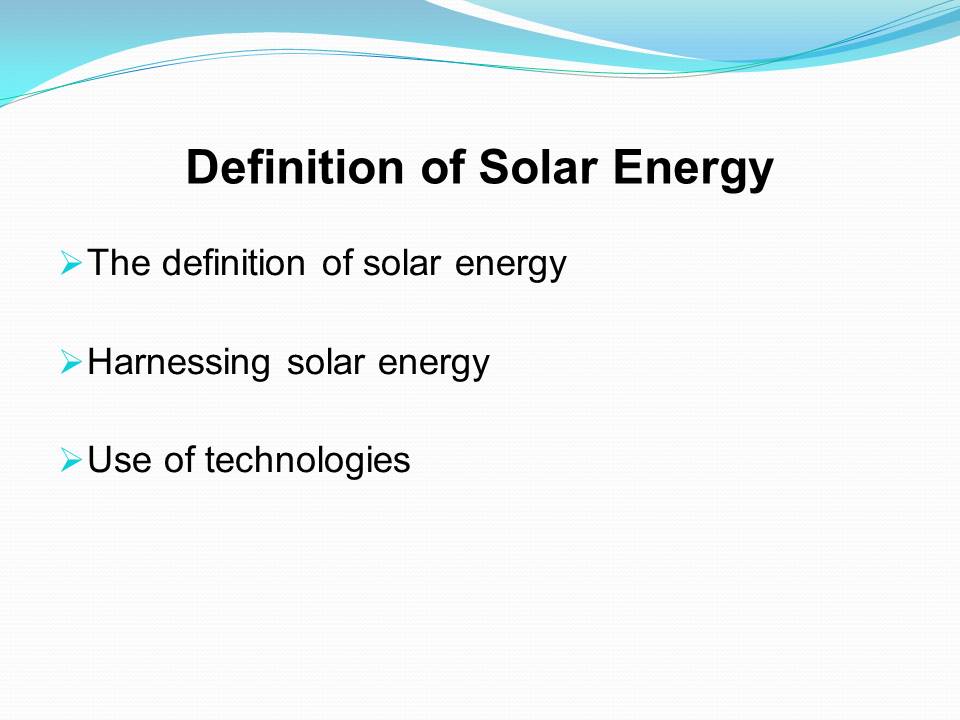
History and Use of Solar Energy around the World
- Increasing demand for energy.
- William Grylls Adams discoveries in 1876.
- Calvin Fuller’s research in 1953.
- Solar energy in US in 1950s.
Following the increase in population in the world, the demand for a more affordable and available source of energy. One of the readily available sources of energy is the solar energy. The history of solar energy started in 1876 with William Grylls Adams. This man together with his students, invented the solar cells like selenium which when exposed to the light they produced electricity. However, the light produced was not efficient. Calvin Fuller along with other researchers discovered the silicon solar cell in 1953. The cell was realized to produce efficient light that would ran some electrical devices. This marked the solar energy harnessing phase and by 1956, there were many solar cells in the market. In 1950s some of the US programs were powered using solar cells.
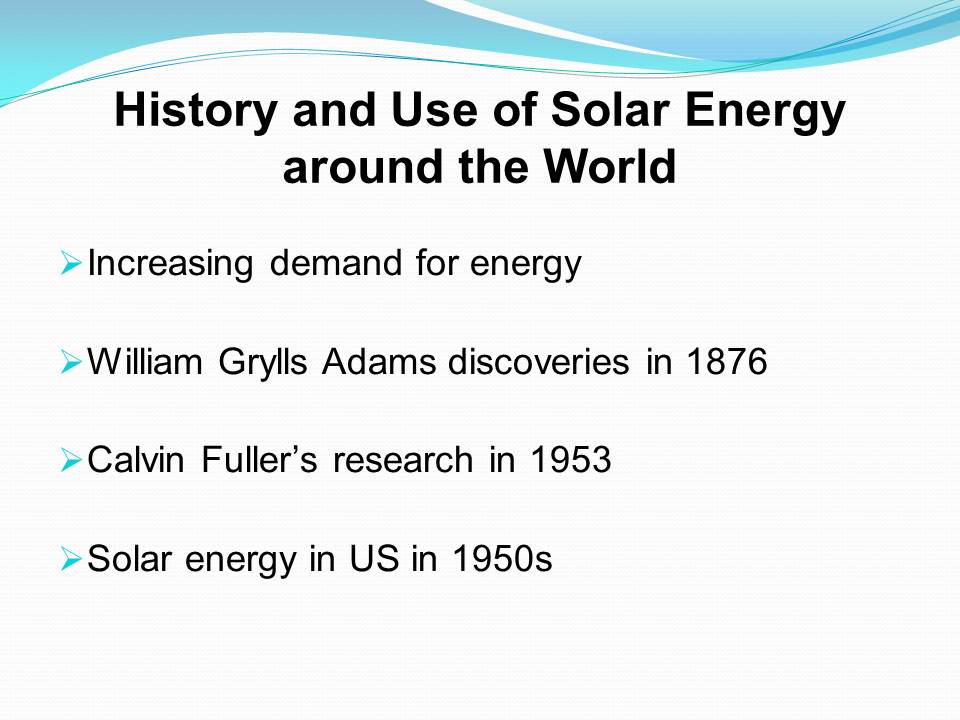
Solar Energy Consumption Around the World
The use of this source of power varies from one country to another depending with the effectiveness of the available solar harnessing technologies. Solar energy though readily available, it is less affordable to many because of the high cost of the solar cells and the ever evolving solar harnessing technologies which are not affordable to many. Countries like the United States, China and Japan comes top in the solar energy consumption. Germany also is another photovoltaic country that effectively managed to harness this power extensively. According to Boxwell (78), the third world countries have not been left behind in using this source of power. Many countries in Africa also use the power to a large extent. The leading countries in solar energy consumption are illustrated below:
- Germany – 9,785 MW;
- Spain – 3,386 MW;
- Japan – 2,633 MW;
- United States – 1,650 MW;
- Italy – 1,167 MW;
- Czech Republic – 465 MW;
- Belgium – 363 MW;
- China – 305 MW;
- France – 272 MW;
- India – 120 MW.
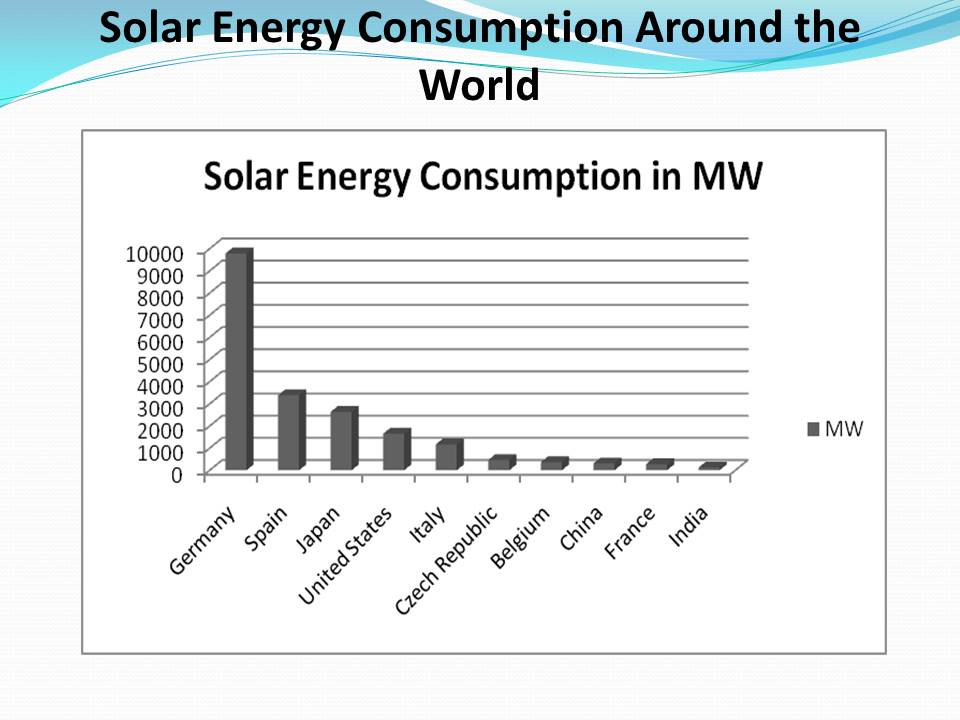
Relationship of Affordable Solar Energy with Engineering
- Traditional use of solar energy.
- The emergency of solar energy engineers.
- The future of solar energy engineering.
Solar energy had been viewed as a traditional source of energy used to dry cereals, wood fuel, and such other related activities. However, engineers realized that solar energy can be harnessed into energy to be used for commercial purposed or for domestic use. In 1876, William Grylls Adams made discoveries on how solar energy can be harnessed for domestic use. Other engineers such Calvin Fuller’s developed the solar technology that is currently un use. The future of solar technology is very bright given the current scientific research being conducted by different engineers.
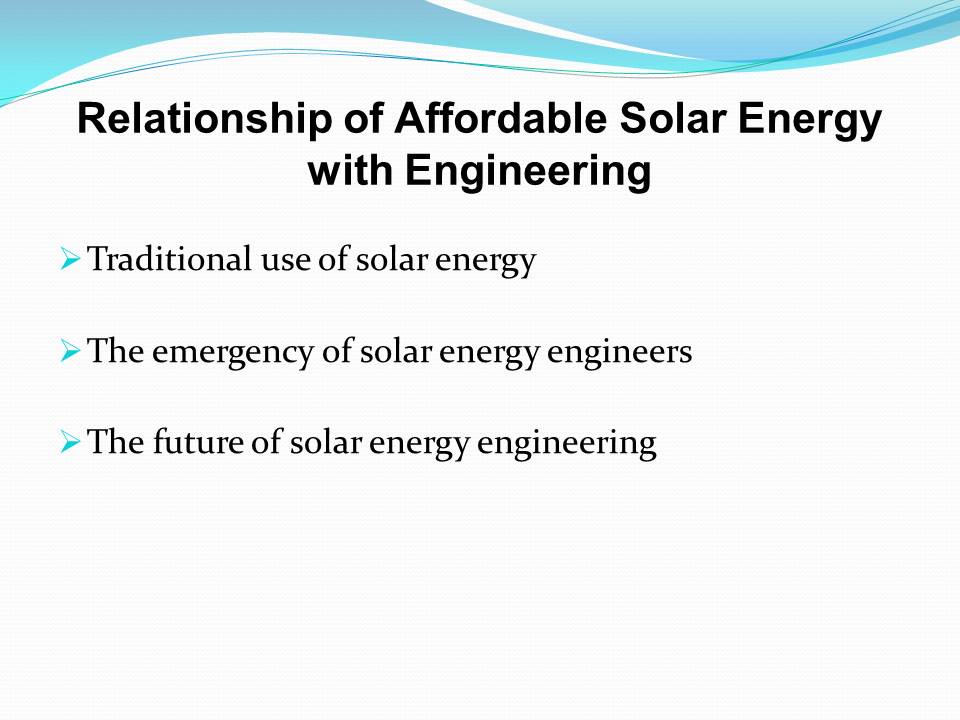
Contemporary Status within the Past 5 Years
- International Energy Agency ‘s work in 2011.
- Development of solar powered plans.
- Plans to use solar-powered energy to circumnavigate the world.
There has been massive research from various stakeholders to advance solar energy as an alternative source of energy. In 2011, the International Energy Agency developed photovoltaic panels that were expected to boost supply of solar energy in various countries around the world. In 2012, there was a successful air travel using a solar powered-plane. There has been plans among solar engineers and engineers in other fields to circumnavigate the world using solar-powered planes.
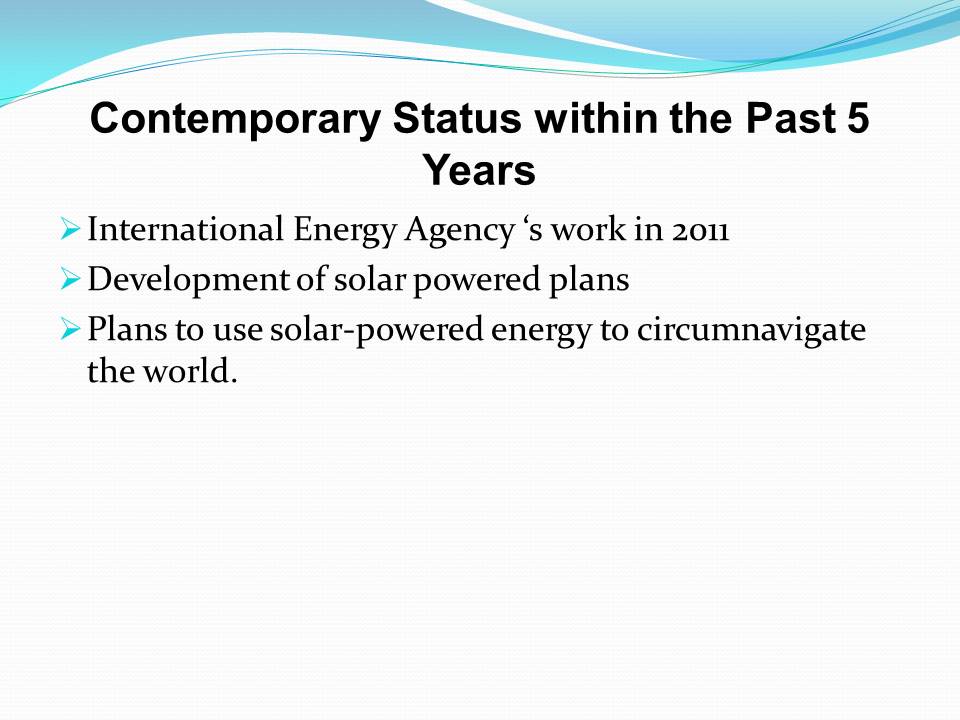
Solutions
- The need for alternative source of energy.
- Reduced cost of energy.
- Increased affordability of the energy.
- Cleaner world.
According to Sukhatme (67), solar energy is faced with many challenges that require to be addressed for its full benefits to be realized around the world. Many countries especially the developing ones are faced with the inability to afford the solar cells that keep increasing every day. To avoid over dependent on other sources of energy like coal, there is a need to adjust the price for solar cells to a state that such countries can afford. The solar energy technologies should be affordable to the consumers to increase the adoption of this natural source of energy. As Richards (31) this can be achieved by encouraging the energy engineers to forces on the solar energy manufacturing to come with cheaper and economical ways of making this energy available for consumption. The engineers can come up with solutions like use of tin cylinders in the construction of cells. This will increase the affordability of this energy to a great level. Sukhatme(59) points out that countries should stick to best solar energy harnessing technologies instead of changing with the evolving technologies to avoid unnecessary expenditures.
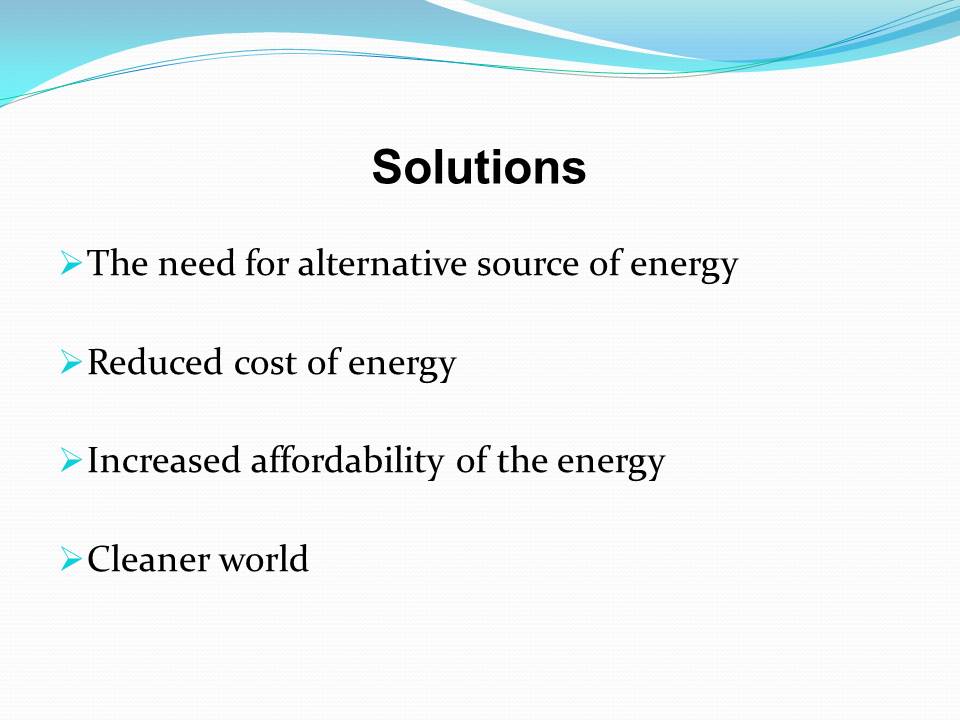
References
Richards, Solar energy. New York: Marshall Cavendish Benchmark, 2009.
Boxwell, Solar electricity handbook: A simple practical guide to solar energy: how to design and install photovoltaic solar electric systems, New York: Cengage, 2012.
Sukhatme, Solar energy: Principles of thermal collection and storage, New Delhi: Tata McGraw-Hill, 2008.